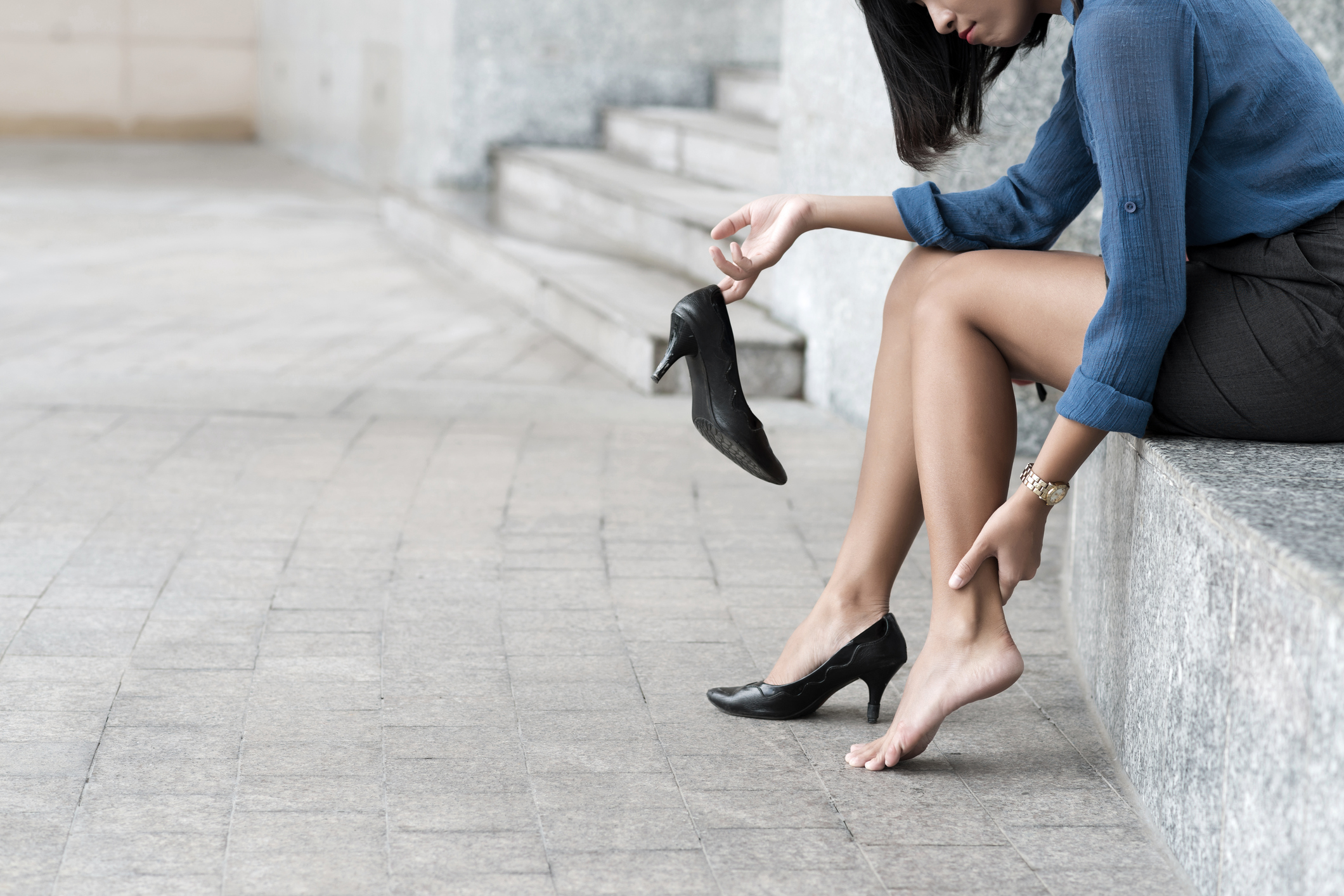Hallux valgus, Metatarsalgia, Morton’s neuroma, and venous insufficiency are some of the diseases related to the shoes we wear, said Dr. Elisa Casabianca, Vascular Surgeon at Humanitas and Dr. Leonardo Maradei, Responsible for Surgery of the Foot and Minimally Invasive Surgeries at Humanitas, in an interview with Corriere della Sera. So we asked our experts, which are the best shoes for sore feet? and why do our feet hurt with certain shoes?
“The sole of the foot is crossed by a dense network of veins that act like a sponge and are very important for venous return. The plantar compression exerted during walking and the muscular pump given by the contraction of the calf muscles, are the basic tools that allow the liquids to circulate. In practice, they behave like the heart, but do not act like a mechanical pump; instead, they “squeeze” the veins and lymphatic vessels.
It is good to preserve these two mechanisms and the shoes we wear can make a difference,” says Dr. Casabianca.
High heels, venous insufficiency and varicose veins
A study published in the Journal of Vascular Surgery compared three types of shoes (shoes with heels of 3.5 cm, stilettos of 7cm and wedge heels of 7cm) and scientifically evaluated the effects on the plantar arch support and on the calf muscle pump in young women during a walking simulation.
“With the 7 cm heels, the function of the muscle pump was reduced. Researchers observed a decrease in the venous return and that the venous pressure was higher than normal. With heels of 3.5 cm, the values were maintained compared to the physiological levels. With these shoes, the plantar support was adequate and the muscles were able to function properly. In particular, the wedge heel proved to be an enemy of proper circulation, with this type of footwear, despite a sense of greater stability compared to the stiletto, it reduced the effect of the plantar pressing due to the stiffness of the sole. Thus, continuous use of high heels is a risk factor in the development of venous insufficiency. For the most part, venous insufficiency is the main cause of varicose veins,” says Dr. Casabianca.
The emergence of Hallux Valgus
A research by the American University of Alabama conducted in 2015 revealed that more than 80% of injuries related to the use of high heels in American women relate to feet and ankles. The first toe is particularly at risk says Dr. Maradei.
“The constant use of high-heeled shoes may induce the appearance of hallux valgus. Halux valgus is one of the most frequent pathologies characterized by the deviation of the foot towards the outside of the base of the big toe. Furthermore, the tip of the foot deviates towards the other toes. It is important to note that these shoes cause hallux valgus, which can also be caused by other reasons. In addition to high-heels, the narrow end of these shoes plays a big role in the appearance and development of this disease.
Metatarsalgia and Morton’s Neuroma
The forefoot is the area of the foot with the metatarsal and phalanges of the five fingers: “Standing for too long on your tiptoes puts considerable pressure on the metatarsal and is the cause of metatarsalgia, a condition characterized by a fairly sharp pain,” explains Dr. Maradei.
Wearing shoes with a narrow toe and heels can also induce the appearance of the symptoms of Morton’s Neuroma, a cyst on the foot nerve that becomes inflamed. “The shoes do not cause the neuroma, but they contribute to the development of symptoms,” says Dr. Maradei.
So, is it best to avoid heels?
It is mostly important to fight against obesity, as it has a negative effect on blood pressure. Engage in physical activity that stresses the calf muscles and “don’t wear high heeled shoes for a long time. This is especially true if you have to wear them the whole day. Even if you do not develop varicose veins, you may still experience swelling, feeling of heaviness, redness in the legs and feet, especially during the summer,” advises Dr. Casabianca.
Girls and women predisposed to varicose veins may develop this condition if they wear high heels recklessly: wearing these shoes for so long with the aggravating factor of the standing position is a risky mix. If you need to wear high heels, a very useful tool to prevent varicose veins is the compression pantyhose. The class of compression should be evaluated by a specialist”.
And what about flats?
“The best shoes for sore feet have heels between 3-5 cm. Extremely low shoes, such as flats, affect the area on the foot that gets the most compression. The combination of medium heels and stockings also works for those who developed varicose veins”, explains Dr. Casabianca.
Although flat-heeled shoes don’t affect the health of the feet they can affect the health of your back. Several people complain of low back pain after using these shoes for a long time. Therefore, the recommendation is to use heels of up to 4cm adds Dr. Maradei.
-
3,400 Physicians
-
110,400 Annual surgeries
-
190,400 Annual Inpatient Admissions
-
928,000 Patients


